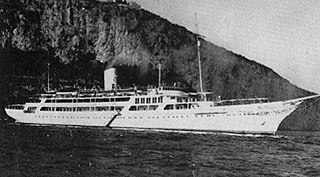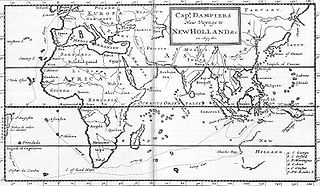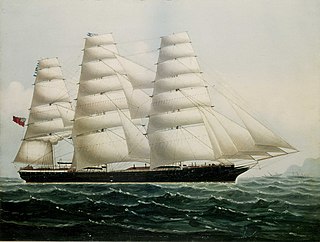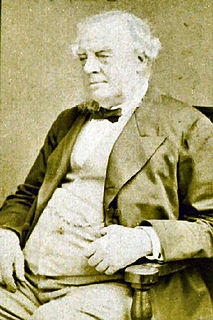
A steamship, often referred to as a steamer, is a type of steam-powered vessel, typically ocean-faring and seaworthy, that is propelled by one or more steam engines that typically move (turn) propellers or paddlewheels. The first steamships came into practical usage during the early 1800s; however, there were exceptions that came before. Steamships usually use the prefix designations of "PS" for paddle steamer or "SS" for screw steamer. As paddle steamers became less common, "SS" is assumed by many to stand for "steamship". Ships powered by internal combustion engines use a prefix such as "MV" for motor vessel, so it is not correct to use "SS" for most modern vessels.

A paddle steamer is a steamship or steamboat powered by a steam engine that drives paddle wheels to propel the craft through the water. In antiquity, paddle wheelers followed the development of poles, oars and sails, where the first uses were wheelers driven by animals or humans.

Steam frigates, also known as screw frigates and the smaller steam corvettes and steam sloops, were steam-powered warships that were not meant to stand in the line of battle. The first such ships were paddle steamers. Later on the invention of screw propulsion enabled construction of steam-powered versions of the traditional frigates, corvettes, and sloops.

British India Steam Navigation Company ("BI") was formed in 1856 as the Calcutta and Burmah Steam Navigation Company.

El Mahrousa, officially renamed for a period of time as El Horreya, is a super yacht that currently serves as Egypt's presidential yacht, and before that as the country's royal yacht. It was built by the British ship building firm Samuda Brothers in 1863 at the order of Khedive Ismail Pasha and the ship was handed over to its Egyptian crew two years later. It is the oldest active super yacht in the world and the ninth largest one.

Robert Moresby was a captain of the East India Company's Bombay Marine/Indian Navy who distinguished himself as a hydrographer, maritime surveyor and draughtsman.

HMS Hindostan was a 50-gun two-decker fourth rate of the Royal Navy. She was originally a teak-built East Indiaman named Admiral Rainier launched at Calcutta in 1799 that the Royal Navy brought into service in May 1804. Before the Royal Navy purchased her, Admiral Rainier made two trips to England for the British British East India Company (EIC), as an "extra ship", i.e., under charter. Perhaps her best known voyage was her trip to Australia in 1809 when she and Dromedary brought Governor Lachlan Macquarie to replace Governor William Bligh after the Rum Rebellion. In later years she became a store ship, and in 1819 was renamed Dolphin. She was hulked in 1824 to serve as a prison ship, and renamed Justitia in 1831. She was finally sold in 1855.

HMHS Rewa was a steamship originally built for the British-India Steam Navigation Company for their mail and passenger service but requisitioned in August 1914 and fitted out for use as a British hospital ship during the First World War. On 4 January 1918, she was hit and sunk by a torpedo from the German U-boat U-55.
The SS Ava was a 1,613 GRT British steamship, constructed in 1855 by the Tod & McGregor shipyard in Glasgow. Described as "an iron screw barque with one funnel", she was operated by the Peninsular & Oriental Steam Navigation Company on the China mail service and was named after Ava, the ancient capital of Burma. She ran aground and was wrecked off the coast of Ceylon in February 1858.

SS (RMS) Mona's Isle (I) was the first vessel ordered for service with the Isle of Man Steam Packet Company when it began its operation in 1830. No Official number is recorded for the vessel, as formal registration was not introduced until the Merchant Shipping Act 1854.

SS (RMS) King Orry (I) No. 21923 - the first vessel in the line's history to be so named - was a wooden paddle-steamer which served with the Isle of Man Steam Packet Company.

Punjaub was a sail/paddle steamer frigate built for the Indian navy operated by the East India Company.
SS Nubia was a passenger steamer, built by John Laird Sons & Company in Birkenhead in 1854 for the Peninsular and Oriental Steam Navigation Company at a cost of £65,750. It was launched on 28 February 1854 and commenced formal service between Southampton and Alexandria on 4 September 1854. It was briefly used in the Crimean War later that year before continuing operations between Suez and Calcutta, passing through the port of Aden en route. On 5 October 1864, it encountered trouble during a cyclone in Calcutta and was driven ashore near King Oudh's palace and had to be refloated. In September 1867, Nubia rescued the passengers of Surat, which had ran aground on a reef in the Gulf of Suez.
A number of ships have been named Hindostan or Hindustan, after the old name for the Indian subcontinent:

George Parbury (1807–1881) was a publisher with a special interest in India, a freemason in India and London, Master of Merchant Taylors livery company, Justice of the Peace for two counties and Deputy Lieutenant of the Tower Hamlets.
Hindostan was launched at Whitby in 1819. She made one voyage, in 1821, transporting convicts to New South Wales. Later, she made two voyages transporting convicts to Van Diemen's Land, one with female convicts (1839), and one with male convicts (1840–1841). When not transporting convicts Hindostan was a general trader, sailing across the Atlantic, to India, and perhaps elsewhere as well. She was lost in 1841.

Larkins made ten voyages for the British East India Company (EIC), all as an "extra ship", i.e. under contract. On two of these voyages she first transported convicts to Australia. She also made one convict voyage independently of the EIC. She traded extensively between England and India or China, and in this twice suffered serious but not fatal maritime mishaps. In 1853 she became a coal hulk at Albany, Western Australia, and remained there until she was broken up in 1876.
HMS Camel was launched in 1812 at Calcutta as Severn. She sailed to England where the navy purchased her for use as a troopship and transport. She had an uneventful naval career and the navy sold her in 1831. Her new owner returned her to her name of Severn. She made one voyage to Bengal and back for the British East India Company (EIC). She continued to trade with India but disappeared circa 1841.
The H[onourable] C[ompany's] S[hip] Hugh Lindsay was a paddle steamer built in Bombay in 1829 for the naval arm of the British East India Company (EIC) and the first steamship to be built in Bombay. She pioneered the mail route between Suez and Bombay. Hugh Lindsay was lost in the Persian Gulf on 18 August 1865.













